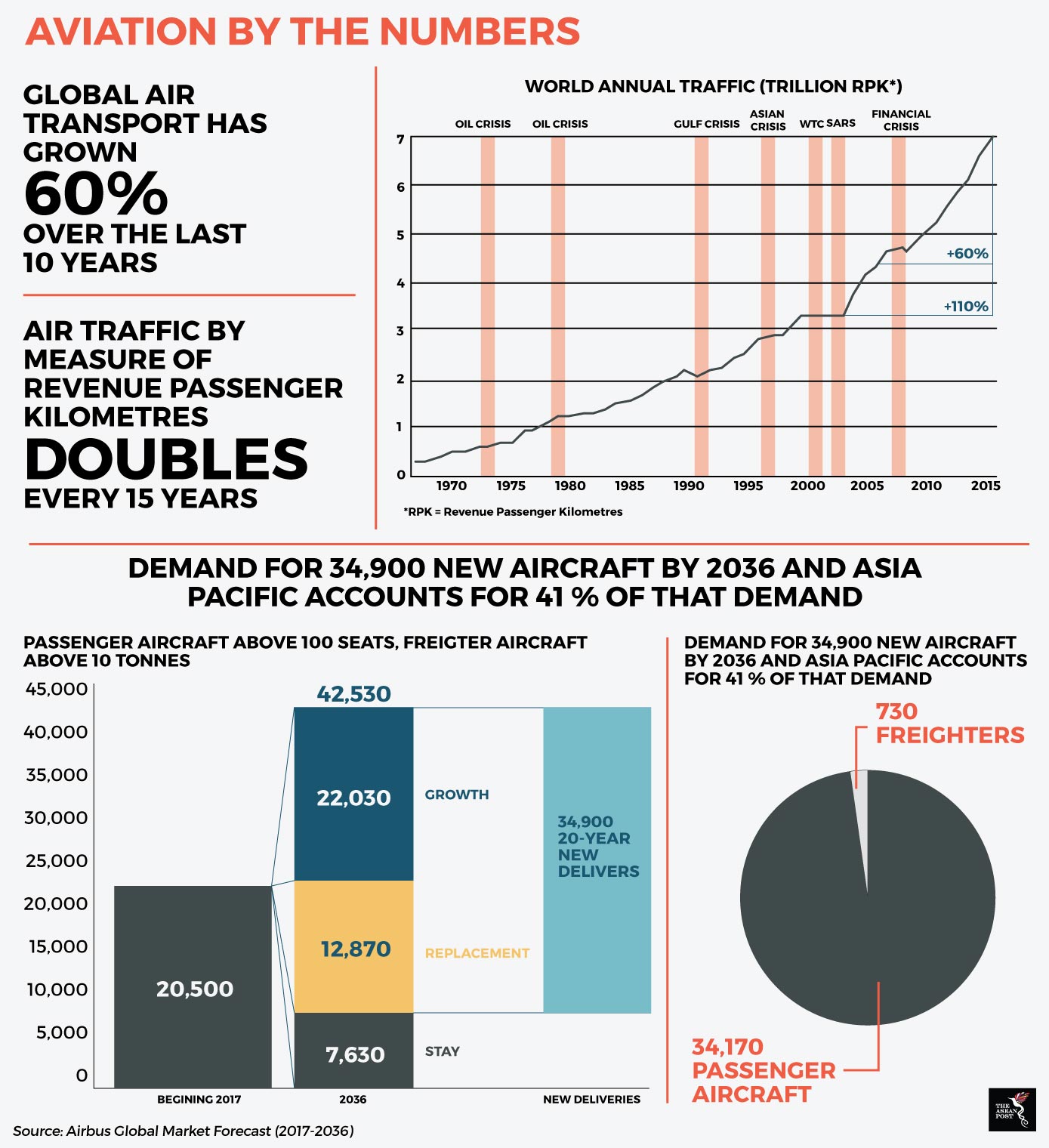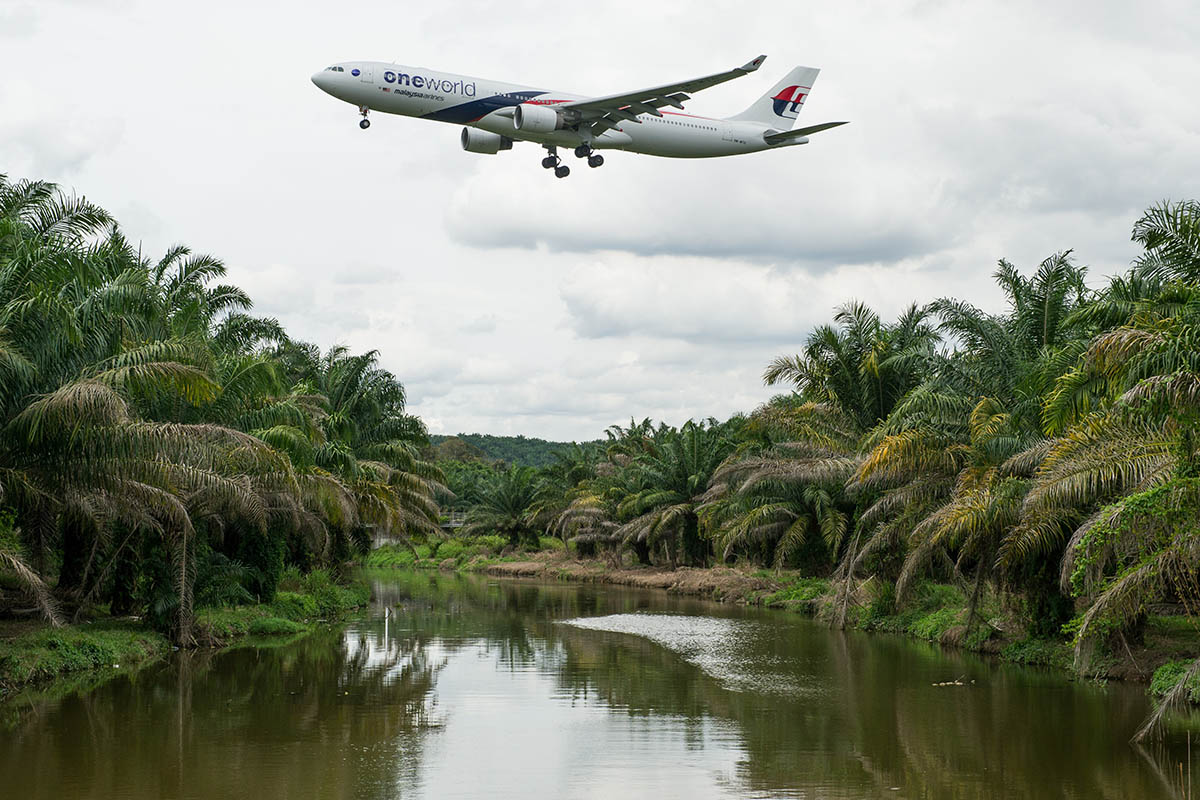Aircraft makers, Boeing and Airbus have plenty to be happy about. Air travel is increasing and as a consequence, demand for commercial planes are up as well.
According to a report by Airbus earlier this year, globally, air transport has grown by 60 percent in the last 10 years. Accounting for that growth, the projected demand for commercial planes will reach almost 35,000 by 2036 and Asia Pacific represents 41 percent of that demand.
Besides that, estimates by the International Air Transport Association (IATA) put the number of passengers travelling in 2036 at 7.8 billion people. The Asia Pacific region will be a key driver of this demand, accounting for almost 45 percent of travellers by 2036.
“All indicators lead to a growing demand for global connectivity. The world needs to prepare for a doubling of passengers in the next 20 years. It’s fantastic news for innovation and prosperity, which is driven by air links. It is also a huge challenge for governments and industry to ensure we can successfully meet this essential demand,” said Alexandre de Juniac, IATA’s Director General and CEO.
By 2036, China is slated to be the fastest growing market in terms of annual additional passengers at 921 million for a total of 1.5 billion passengers. As was highlighted in the report by Airbus, this is a key market to tap into and Chinese tourists are favouring Asian destinations. Within the top 10 outbound destinations for Chinese tourists, four are in Southeast Asia, namely, Thailand, Singapore, Vietnam and Malaysia (in order of popularity). This is a gleaming potential that airline companies should be looking to snap up.

Deals, deals, deals!
Airbus currently holds the leading share in the Asia Pacific region. It forecasts a 5.6 percent increase in annual passenger traffic which translates to additional demand of some 14,450 new aircraft over the forecasted period. This year, Airbus will deliver the first A350-1000 for the region to Cathay Pacific, as well as the first A350 Ultra Long Range to Singapore Airlines.
“Accounting for one third of Airbus total backlog, one third of Airbus total orders and one third of the overall Airbus in-service fleet, there is no doubt that Asia-Pacific is a core market for Airbus. With traffic tripling over the next 20 years, and some of the highest growth rates, the Asia-Pacific region will by far be the world’s largest aviation market,” Eric Schulz, Airbus Executive Vice President, Chief of Sales, Marketing & Contracts said during a media briefing at the opening of the Singapore Airshow 2018 in early February this year.
“Airbus had an excellent year in Asia-Pacific in 2017 and we see more potential in the coming years, in particular in the widebody market, where the region will account for 46 percent of total worldwide demand,” Schulz added.
But its competitor, Boeing is not to be outdone.
At the same airshow, Boeing announced service orders from airlines from around the region worth almost US$1 billion.
“Boeing is serious about helping customers optimize the performance of their fleets and reduce operational costs throughout the lifecycle,” said Stan Deal, president and CEO of Boeing Global Services.
“Predicted growth for aerospace services in the Asia Pacific brings opportunities to partner with local industry to understand the region’s greatest needs, invest in new capabilities to meet those needs, and then bring them to market quickly,” he continued.
Among the airlines that inked deals with the American aircraft maker included, Malaysia Airlines, SilkAir, Singapore Airlines and Royal Brunei Airlines. The agreements stretched across Boeing’s capability areas like parts; engineering, modifications and maintenance; digital aviation and analytics; and training and professional services.
The aviation industry is doing well and will continue to prosper as players in the aerospace field successfully meet the growing demand for air travel in the Asia Pacific region. As one of the most dynamic regions in the world, Southeast Asia will be a hotbed where this progress takes place. It would be interesting to see the outcome of all this activity as it unfolds over the next few decades.
Recommended stories:
